Being There
Over the years I would have to say I attended between 150 and 200 games at Shea Stadium. I never got a season ticket, except the 2008 season when I had a Sunday plan. I’ve been there for some memorable occasions, though.
— In 1970, I attended a game against the Phillies in April in which Nolan Ryan allowed a single to Denny Doyle, leading off, but allowed no other hit. The Mets defeated Jim Bunning in the game.
–Also in 1970, I watched Tommie Agee hit for the cycle (a single, double, triple and home run) against the Cardinals.
–In July 1978, I watched Pete Rose tie Tommy Holmes’ then-NL best consecutive games hit streak (38 games). Rose would eventually tie Willie Keeler for the MLB all-time second-best at 44 games.
–Rose again: in May 1986 I saw Rose hit a rare 3-run single to beat Dwight Gooden (it can happen on a 3-2 count with two out and all 3 runners on base in motion). The game snapped a 7-game Mets win streak. At the time, the Mets were 20-5 and your webmaster had attended two of the losses. The first was in Philly, the only game I was ever in Philly’s Veterans Stadium, when the Mets dropped a 9-8 14-inning game. Later that year, I attended the Mets’ final regular season home game. There was a party atmosphere as Daryl smashed a grand slam and the Mets pounded Pittsburgh.
–In April 1987, the Mets met the Atlanta Braves in an early season contest. This was the game in which Dion James killed a rock dove with a fly ball. He hit it toward Kevin McReynolds in left, who lined up for the catch, but watched in disbelief as the ball struck the bird and, both bird and ball plopped in front of him. It was a bad sign for Bob Ojeda and the Mets, who went on to get pounded 12-3 with Doug Sisk (who else) allowing 3 of the runs.
–On July 24, 1988 I attended Tom Seaver Day at Shea, when his number was retired. At the end of Seaver’s remarks, he went to the mound and bowed four times in each direction. He would repeat this, briefly, on September 28 when the stadium closed. The Mets then lost to Atlanta.
— On May 23, 1998 I attended the newly-acquired Mike Piazza’s first game as a Met. He came through with a run-scoring double as Al Leiter beat the Brewers. There was a lot of walkup business that day, but the Mets did not sell out. Amazingly, Piazza was plagued by boo birds during his first weeks with the Mets as he slumped slightly, but he quickly righted himself. That year the Mets were in the thick of things, but dropped their last five to let any postseason hopes slip away.
–On September 29, 1999, the Mets desperately needed a victory to once again keep playoff hopes alive. John Olerud came through with a grand slam and the Mets beat Atlanta.
–September 25, 2003 marked broadcaster Bob Murphy’s retirement party and Mike Piazza’s debut at first base. The Mets asked Piazza to shift to first base to perhaps give new life to his bat, but in 2004 it became painfully obvious Mike was not a first baseman. On this night, he took over first base in the 9th inning and the first batter hit a line drive right to him. He also made the next two putouts.
And then there was September 28, 2008…
The game-day window was closed, since this game had long before been sold out. On both sides of the stands where they open in left and right fields, murals celebrated the Mets’ two World Series victories in 1969 and 1986.
Graphics maven that I am — I could not help but to note the blue and orange signage used in front of the entrance ramps in Shea corridors.
While section and box numbers were marked by enamel signs, designated in whatever color level they were in (red, upper; green, mezzanine; blue, loge; orange, field box) box numbers also appeared in brass signs affixed to railings. I wonder if these are being removed and offered for sale, as most other Shea Stadium artifacts are.
There are also some mysterious numbers that were on the insides of the metal seat housings. These, by the way, were the originals; wood seats that were at Shea from 1964-1980 were replaced by these plastic ones that year.
Before the game I walked around the upper deck to get the full panoply from right to left field.
Both DiamondVision (1982) in left and the Home Run Apple (1981) in right center were introduced during the Mets’ early 1980s “The Magic Is Back” era. The screen was 35’8″ x 26’3″ high. While Dunkin’ Donuts sponsored the Mets, a giant coffee cup in left field revolved when a Met hit a home run, too.
I wonder if any Mets ever hit the HR Apple. Remember the Abe Stark “Hit Sign Win Suit” campaign at the Dodgers’ Ebbets Field?
Famed cartoonist Willard Mullin designed the art for some Mets yearbook covers, including this one from 1965. Shea was jammed in the early days despite the Mets having execrable teams — many fans were thrilled to see National League baseball back in New York again and they came out when the despised traitors from San Francisco and Los Angeles showed up at Shea. Unfortunately they were rarely afforded Mets victories over the Giants or Dodgers.
Mr. Met has appeared on Mets game programs, tickets, etc. since 1963, and was played in person by Dan Reilly for a few years in the Sixties. He was brought back as a mascot at home games in 1994.
And, he’s a big hit with the ladies at weddings, though he’s been happily married to Lady Met for over 30 years.
Ethel Merman and a bevy of beauties entertained on June 28, 1965. Note the scoreboard — more on that in a sec.
It’s hard to read the bottom with this resolution scan. It mentions that the collectible Mr. Met watch (are there any still around?) was available at A&S, Gertz, Gimbels, Macy’s and Bamberger’s.
J-E-T-S!
Though I never saw the Jets at Shea I’d be remiss if I didn’t mention them. They moved from the Polo Grounds, along with the Mets, in 1962. At Shea the former Titans changed their uniforms from blue and gold to green and white and became the Jets. The team rarely played any important games at Shea, since the Jets rarely made the playoffs during their time there from 1964-1983, but Shea saw the rise of Joe Willie Namath and one of the most important games in club history on December 29, 1968, defeating the Oakland Raiders 27-23 in the AFL Championship Game to ascend to the Super Bowl, played at the Orange Bowl in Miami on January 12th, 1969. The Jets shocked the world by beating the heavily favored Baltimore Colts. The Mets would similarly shock the Baltimore Orioles a few months later.
Two other Jets playoff games occurred at Shea Stadium: on December 20, 1969, the Kansas City Chiefs, enroute to their own Super Bowl victory, dropped the Jets 13-6; on December 27, 1981 in a wild card playoff game, the Buffalo Bills jumped off to a fast start, the Jets mounted a furious comeback but were short circuited when Richard Todd was intercepted in the Bills’ end zone. The Jets would make the playoffs again in 1982, but their three playoff games were on the road including the “Mud Bowl” in Miami in which Todd was picked off five times. The Jets moved to the New Jersey Meadowlands as co-tenants with the New York Giants for the 1984 season. In the Jets’ final game at Shea on December 10, 1983 they lost to the Pittsburgh Steelers, 34-7, in Terry Bradshaw’s last season.
Shea Stadium was the first dual-use stadium with seats that could move on underground tracks to make the field football-ready.
I never used to arrive at Shea Stadium in time for batting practice, but I was early enough to see the Marlins finishing up, observed by hitting coach Jim Presley.
Home and home. Throughout 2007 and 2008, Citifield rose beyond the center field wall. From 1967 well into the 1990s, the outfield wall was plexiglass in front of the bullpens so binocular-wielding fans could see who was warming up. Advertising won out over this feature, however.
The Scoreboard
Shea Stadium was, perhaps, the second MLB ballpark with a massive, full-featured scoreboard (I think Bill Veeck’s White Sox’ “exploding scoreboard” was the first in 1960). It was replaced with a completely new board in 1988.
LEFT: Shea scoreboard in 1965. When Shea first opened, the big square at the top of the scoreboard would be filled with a picture of whoever was at bat (here, bespectacled shortstop Roy McMillan). They could never get it to work and soon after, it was filled with the Mets logo and so it remained till 1988.
RIGHT: It’s 3:16 PM, October 16, 1969 and the Mets have just beaten the Orioles to win the World Series. Here we see the plexiglass bullpen fence, and the Rheingold ad and Longines clock are unchanged since 1965. The large white background was translucent, containing colored light bulbs which lit up at night.
The Mets have always shown umpires’ numbers on the scoreboard. Most fans hadn’t memorized the umpires’ numbers and had to consult a program. For many years, too, the Mets used a separate system of numbering in the scorecards: pitchers’ numbers, as shown in the scoresheets, were not their uniform numbers. Fans had to consult a separate chart in the book to look up the numbers!
On the old scoreboard, there wasn’t any space for RF and LF umpires, who are used only in the postseason. The old board had room for 10 innings and there was a “1G” space that listed the score of first games of doubleheaders. When I first saw it I wondered what “IG” was for.
The illuminated NYC skyline at the top of the scoreboard, with a ribbon obscuring the Twin Towers, will be one of the few Shea features brought into Citifield.
It’s strange to remember now but for many years, into the 1970s, the main television shot at Shea was not from centerfield, but from behind the plate. This meant that the umpire and catcher obscured the spot where the ball crossed the plate, so that fans watching at home couldn’t tell where the ball was. The centerfield cameras attained prominence in all of MLB in the 70s.
Of course it’s a fair pole, it’s a fair ball! — Warner Wolf Since 1978 the distance to home plate to left and right field has been 338 feet, changed from 341 feet at then-manager Joe Torre’s request. When the fences were moved in, chicken wire screens were added to the poles.
On April 10, 1969, Tommie Agee launched a fair HR drive into the nosebleed upper deck in left field. Despite Dave Kingman, Richie Allen, Mike Schmidt and other right-handed power merchants playing at Shea, no other player managed the feat (Mike Piazza’s power was mainly to left or right center). The spot where it hit was marked with this sign. Though my 1969 yearbook says that game was televised, I have never seen a replay, but lots of video has gone unarchived or has deteriorated over the years.
The Mets have retired four uniform numbers, but only Tom Seaver (41) has had his retired for his exploits as a player. Gil Hodges (14), Casey Stengel (37) and Jackie Robinson, whose 42 has been retired by all MLB clubs, are the others.
The Last Game
The eternal Mr. Met greeted longtime Met employees before the game, and assisted Tom Seaver in unveiling the final countdown number. After the game, Mr. Met removed the “1” and unveiled… the Citifield logo. photo right: New York Daily News
Marc Anthony sang the anthem (Glenn Close, who I had no idea could sing, sang God Bless America in the 7th innning.) The Mets took the field at 2PM, led by David Wright and Jose Reyes, who took their positions at 3rd base and shortstop first.
Well. The game was tied at 2 in the eighth, but the bullpen was torched again, the bats went silent, the Mets lost 4-2 and were eliminated when the Milwaukee Brewers won. Nuff said about that. The Fish took their time celebrating, but several scooped up some Shea turf, so some of those guys had a sense of history. David Wright was photographed doing the same and I imagine other Mets did too. The grounds crew got some samples.
In the closing ceremonies, 43 veterans from 46 seasons were introduced and walked out from the left and right bullpens, glad handing fans in the front row all the way. From 1969, Seaver, Jerry Koosman, Cleon Jones, Ed Charles, Ron Swoboda, Art Shamsky, Jim McAndrew, Ed Kranepool, Wayne Garrett, Bud Harrelson and “Little” Al Jackson (who played briefly for the Mets in 1969) were there. The house went nuts when out came 1986’s heroes, Keith Hernandez, Ron Darling, Lenny Dykstra, Gary Carter, Howard Johnson (the Mets’ 2008 hitting coach was still crestfallen from the game earlier), Wally Backman, Sid Fernandez, Jesse Orosco, Tim Teufel, Bob Ojeda, and especially Dwight Gooden and Daryl Strawberry. I was especially glad to see guys from the Wilderness Years of the 1970s and 1980s such as Dave Kingman, George Foster, John Stearns, Craig Swan and Doug Flynn. And, there were guys from that first season at Shea like Jack Fisher, Ron Hunt and Frank Thomas. Yogi! Willie Mays, always a New York hero and a Met in 1972-73. Oh, and Mike Piazza was introduced second to last, just before Tom Seaver.
One by one the players came down from the 1st and 3rd base lines and touched home for the last time. Al Leiter, who good-naturedly accepted some booing (he is a game analyst for YES, the Yankees’ TV network). Robin Ventura (shown at left touching the plate), “Mr. Grand Slam” who beat the Braves with the famed “grand slam single” at Shea in 1999. Todd Zeile, who did two hitches with the Mets, was a part of their 2000 World Series club and hit a home run in his final career at bat at Shea. There was George Theodore: “The Stork”‘s career was short-circuited when he suffered two horrific accidents in the 1973 season, a fastball that shatered his eyeglasses and a collision with Don Hahn in the outfield. (Stork returned and pinch hit in the 1973 World Series). Willie Mays, a little unsteady now, bent down and touched the plate with his fingers. Bud Harrelson got a running jump and leaped on the plate.
Piazza and then Seaver were the last two to touch the plate. The two lined up on the mound at home and Seaver tossed a final pitch to Piazza.
The two men then walked to centerfield as the Beatles’ In My Life played, and ceremonially closed the stadium by shutting the centerfield doors behind them as they left. The lights went down, orange and blue fireworks erupted, and Aaron Copeland’s Fanfare for the Common Man rang out.
Shea Stadium was closed. photos left: NY Daily News
The Mets will see you in 2009 at Citifield.
Inspiration: the Mets of 1969, 1973, 1984, 1985, 1986, 1987, 1988, 1998, 1999, 2000, 2006, 2007 and 2008. Consult METSBLOG, ULTIMATEMETS, FAITH AND FEAR IN FLUSHING, and LOGE 13. For much, much more on Shea Stadium see Paul Lukas’ ESPN page.


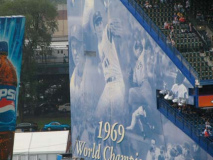

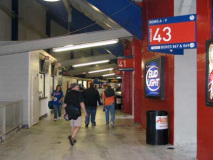
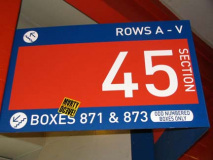
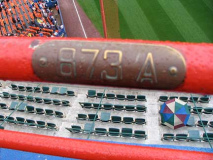
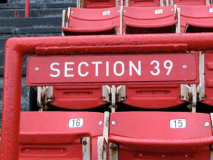

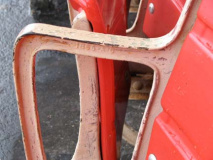
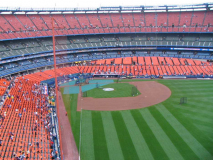
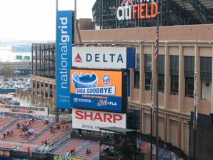

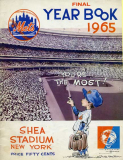
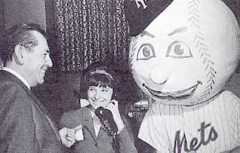
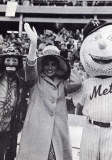
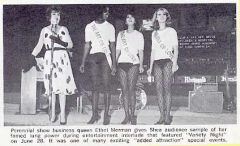
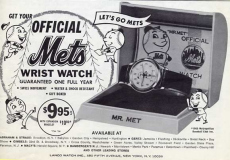
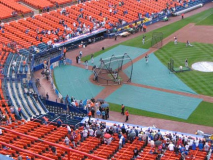


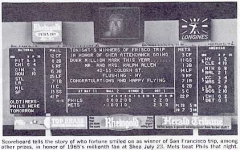

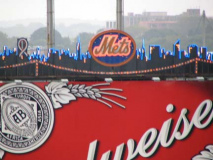

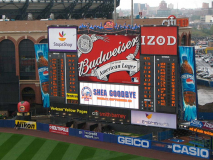
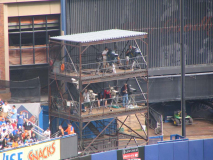



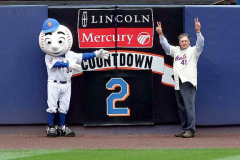
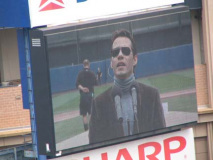
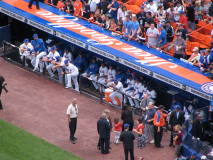

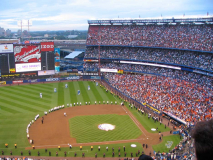
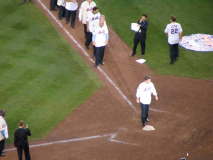

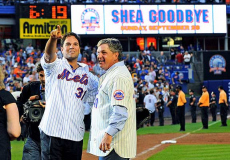
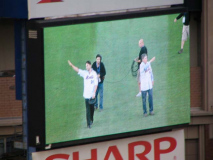
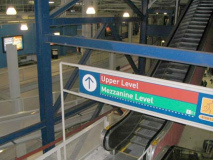
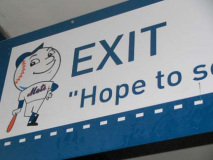
1 comment
My friends and I called the blue and orange panels on the outside of Shea “the Chiclets.” I also was at the game where Pete Rose tied the Wee Willie Keeler record.